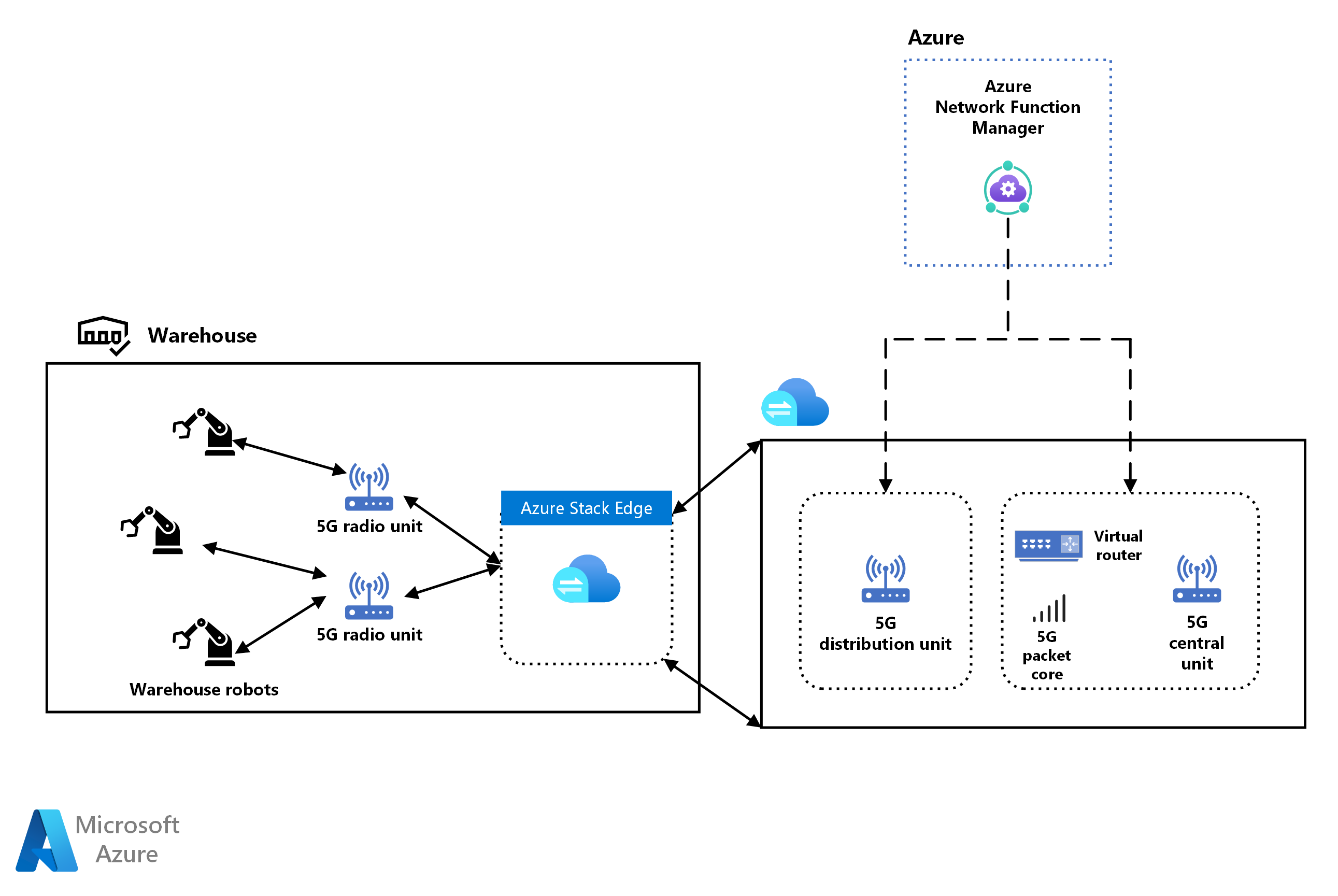Solution ideas
This article describes a solution idea. Your cloud architect can use this guidance to help visualize the major components for a typical implementation of this architecture. Use this article as a starting point to design a well-architected solution that aligns with your workload's specific requirements.
This solution describes how manufacturers can use high-performance, low-latency 5G Standalone networks to scale up industrial automation and productivity.
Architecture
Download a Visio file of this architecture.
Dataflow
- Embedded 5G-enabled internet protocol (IP) modules connect warehouse robots to 5G Open Radio Access Network (ORAN) radio units. RAN is a common wireless network infrastructure for mobile networks.
- The 5G radio units connect over a wired switching network to the 5G distribution unit software, which runs on private multi-access edge compute (MEC) on Azure Stack Edge.
- The 5G distribution unit connects with the virtual router, 5G central unit, and 5G packet core, which run on a separate Azure private MEC instance on Azure Stack Edge.
- The 5G packet core provides device authentication, an IP address, and connectivity based on a preconfigured profile.
- Azure Network Function Manager controls both MEC instances.
- Optimizing the 5G network and keeping traffic confined to Azure private MEC provides the low latency these connection scenarios require.
Components
This solution uses the following Azure components:
- Azure Stack Edge is a portfolio of devices that bring compute, storage, and intelligence to the IoT Edge.
- Azure Network Function Manager enables the deployment of network functions to the IoT Edge using consistent Azure tools and interfaces.
Scenario details
5G Standalone networks reliably connect machines to other machines or controllers. 5G-enabled Internet of Things (IoT) devices like robots can communicate and operate autonomously on the factory or warehouse floors.
The 5G Standalone network is deployed as a Non-Public Network (NPN), with all data remaining on premises. The NPN configuration offers security, privacy, and reliability. Azure deploys and manages the network and devices.
Potential use cases
This solution is ideal for the manufacturing, agriculture, energy, facilities, telecommunications, and robotics industries. Use this approach for scenarios like:
- Picking shipments efficiently in a warehouse.
- Dispersing seeds from an autonomous seed sprayer machines on a farm, based on information from soil sensors.
- Conserving energy in commercial buildings by shutting off lights when no motion is detected in a room.
Contributors
This article is maintained by Microsoft. It was originally written by the following contributors.
Principal author:
- Nikhil Ravi | Product Management Leader
Next steps
- Azure Private MEC
- Azure Industrial IoT
- Azure Network Function Manager simplifies 5G deployments (Video)
